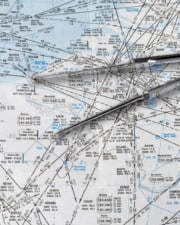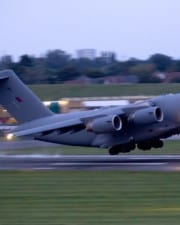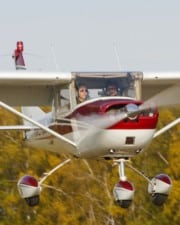Everyone knows that pilots need a lot of training to learn to fly their airplanes, right? Well, not only do pilots have to go to school to learn how to fly, but they also get trained in each different type of plane they fly. Imagine having to go to school just because you bought a new Toyota when you traded in your old Ford.
Table of Contents
Once a pilot has been flying their Toyota—err, Boeing 737 for a while, they’ll also need recurrent training. Recurrent training is required by the FAA and airlines once or twice every year. It’s a two or three-day session, with simulator rides and classroom work—and of course, tests.
Recurrent Training and Currency Requirements
All active pilots must complete some form of recurrency training. The exact content depends a lot on the type of pilot in question and how they operate.
Different types of flying activities are covered in different parts of the regulations. Some regulations are for the pilots and tell them what they need to do to get and keep their pilot certificates (Part 61). Other parts tell pilots how they should operate an aircraft, like Part 91.
Then there are regulations that tell companies (like airlines) what sort of pilots they can hire and what training they must provide. Airlines operate under FAR Part 121, while unscheduled charter operators operate under FAR Part 135.
The result is that quite a few different things are being discussed when a pilot’s currency is in question. Firstly, have they met the basic requirements to get and keep their certificate, listed in FAR Part 61? Secondly, have they met all of the requirements laid out for pilots working for a Part 121 or 135 certificate holder?
FAR Part 61 — Recency of Flight Experience
The most basic level of pilot currency comes from FAR Part 61, which most pilots call the “currency” requirements. These simple requirements are undoubtedly already met by a working pilot. But pilots who have taken a break or an extended vacation might need to meet these first.
All pilots need to complete:
- A flight review within the last 24 months, or passed a test for a new certificate or rating
- Three takeoffs and landings in the last 90 days in the same category and class aircraft
- Three takeoffs and landings (to a full stop) in the last 90 days for night flying.
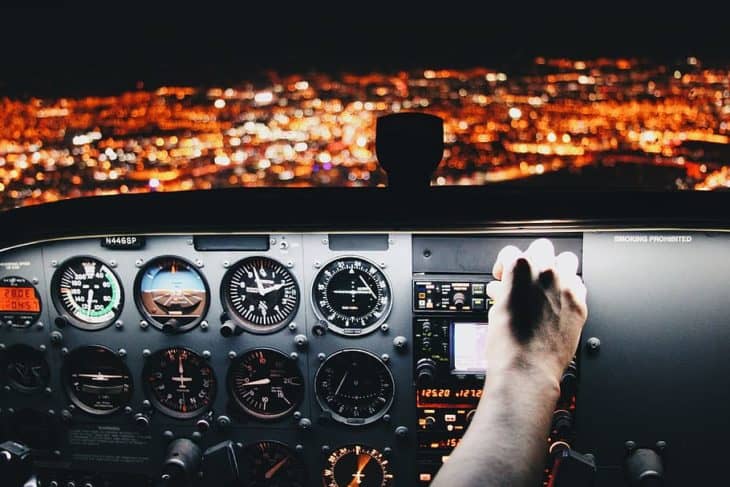
None of these requirements are complicated to complete. Remember, these are the most basic requirements, and they are of the most interest to the private pilot who does not receive any other form of recurrent training.
The flight review is commonly called the Bienniel Flight Review, or BFR. The rules state that it must be done with a flight instructor and must include at least one hour of ground instruction and one hour of flight instruction. Thus, if a pilot is rusty, it’s up to the flight instructor to figure out if they need more “recurrent” training or not. Without a current flight review, a pilot cannot operate as a required crewmember, like the pilot in command (PIC).
The three takeoff and landing requirements are even easier. These can be done solo since they are only required to carry a passenger. So if a pilot has gone 91 days since they’ve last done three takeoffs and landings, they can simply take the plane out solo and do three each to get current. They can then pick up their passengers and be on their way.
Instrument pilots have additional requirements that need to be met before they can use their instrument flying privileges. In general, this means that they must have logged six instrument approaches in the last six months. But with instrument currency, there are many complicated options for using simulators and flight training devices.
Like the other basic currency requirements found under Part 61, the instrument currency requirements are easy to meet for working pilots. The point of these regulations is to make sure that pilots aren’t hopping in the cockpit and going out flying with rusty and outdated skills.
Part 121, 125, and 135 Recurrency Requirements
Those requirements are for private and commercial pilots who don’t work for airlines to worry about. If they work for an airline, or a “certificated air carrier” in the FAA’s parlance, there will be more specific requirements.
Also of interest is FAR Part 125, which concerns how very large aircraft are operated. These include planes that can carry more than 6,000 pounds of payload or have more than 30 passenger seats. This regulation lays out even more specifics regarding pilot recurrency training.

All of the training requirements in these three regulation chapters are very similar. Overall, they state that recurrency training should include at least the following.
- Aircraft and power plant components and systems, limitations, and standard and emergency procedures
- Weight and balance procedures
- Navigation
- Air traffic control procedures, including instrument procedures
- Weather and dealing with ice, fog, or thunderstorms
- High altitude considerations
- New equipment or company procedures
- Ground icing procedures
- Practical skill and technique competency check
In addition to these basic requirements, an airline recurrency program includes the following.
- 15 to 24 hours of ground training, depending on the aircraft
- Crew resource management (CRM) training
- Line-oriented flight training (LOFT)
- Leadership, command, and mentoring training
- Extended envelope training
- Low altitude wind shear flight training
What is Pilot Transition Training? Is it Like Recurrent Training?
There are a lot of training requirements hidden in FAR 121. In addition to recurrent training, there is also initial, transition, and upgrade training.
Initial training is for pilots who have been newly hired by the airline. Transition is for pilots who work for the company but are moving to another type of aircraft. Finally, upgrade training is for first officers who are upgrading to captain.
All of these are for career moves on the part of the pilot. Recurrent training is not—recurrent training is required regardless of any of these changes. But, if the pilot completes the initial, transition, or upgrade training, they’ll reset the clock for the next time they need to go to recurrent training.
A Typical Airline Recurrent Training Program
All airlines structure their recurrent training programs a little differently. There is a certain amount of flexibility built into the regulations, allowing companies to use the training time to address internal company issues and things they’d like to communicate with their employees.
There is always a classroom component and a simulator component. Each part has an associated test. Many pilots find it a bit nerve-wracking—nobody likes tests, and even though the pilots fly these planes every day, they seldom have check airmen watching their every move.
Due to the amount of information covered and the limited time available to cover it, airline-style training is often described as being like drinking from a fire hose. By this point in their careers, pilots are well-used to sitting in classrooms all day long and then having to perform well on an exam. Likewise, they’re used to getting very little practice in performing a task in the plane before being evaluated on their ability to perform it.
Most recurrent programs are a few days long, which isn’t enough time to fully learn all the new material that might be presented. This is why pilots must do their homework before they show up to the training and study the information that has been sent in advance.
Day One — Classroom
The first day of training usually includes a larger group of students. First, all safety gear is brought out and used. A life raft is inflated, and everyone practices using their life vests. The second half of the day is spent reviewing aircraft systems and procedures using a paper cockpit mock up. That culminates in a lengthy written exam.
Day Two — Simulator
The second day is spent with fewer students and includes simulator work. The simulators used in airline training are full-motion Level D simulators, which are so realistic that students can go directly from them to carrying passengers on the flight line. Thus, they are a nearly identical flying experience to the actual airplanes.

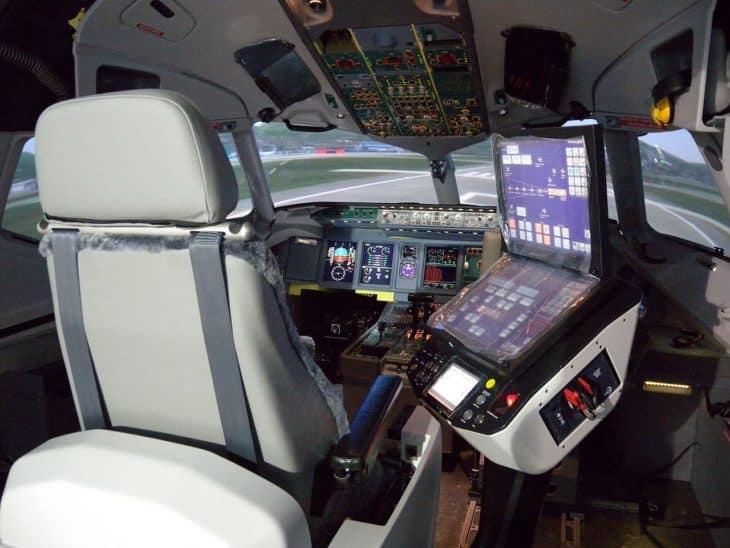
Simulator sessions are usually a few hours long and cover normal and emergency operations similar to those that the pilot experiences on the line. As crews alternate time in the simulators, there are workshops conducted on special training topics.
Day Three — Evaluation
The third day is a mirror of the second, with a mix of simulator sessions and workshops. But the end of the day culminates in the LOE, or line operational evaluation. This is the recurrent version of a checkride, and each pilot must perform to the Airline Transport Pilot certificate standards.
Each simulator session, including the LOE, ends with a debriefing from the simulator instructor or check airman. This might be quick if everything went very well, or you might spend more time discussing what you could do better next time.
Recurrent training is seldom longer than three days, but if a pilot needs more training, it will be provided before they return to line service.
Related Posts


